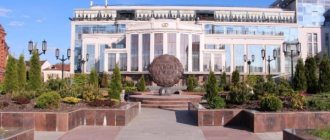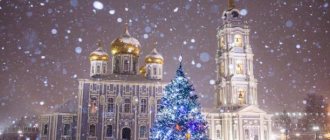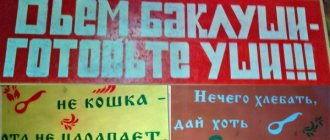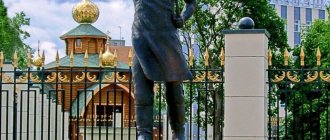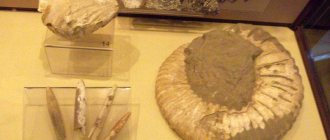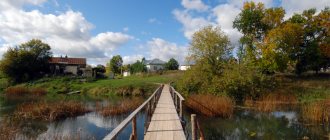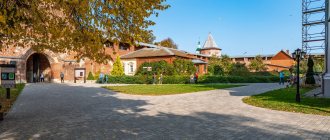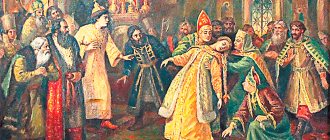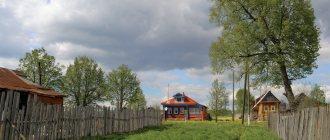“Where to go for the weekend with children?” — this question always interests Muscovites, but especially with the onset of warm weather. For one day you can get to the ancient cities of the Moscow region, and for two you can go deeper into neighboring regions, especially since now comfortable express trains go there “Central Suburban Passenger What to see in Tula?”, a 7ya.ru reader recently asked. It turned out that there was a lot, a lot - and the weekend might not be enough. My 9-year-old daughter and I set off on the Moscow-Tula express early Saturday morning from the Kursk station and after just over two hours we found ourselves in the city of gingerbread, samovars, Filimonov toys and weapons factories.
Tula Kremlin
The Tula Kremlin, ten years ago, was a heartbreaking sight, but now it is a ready-made tourist attraction, where there is also the Assumption Cathedral of a slightly non-canonical purple color:
And also strong walls with recognizable “swallow tails”, making one suspect the Italians of building the Kremlin, and 9 towers that were never captured by the Mongol-Tatars, which you can walk along in good weather, and a former temple where the Museum of Weapons used to be located, and shopping rows with all the necessary entertainment, souvenirs, shops.
Gingerbread Museum
After street walks, the feet naturally go to the Kremlin “Museum of International Gingerbread” - so cozy, all covered in toys, pillows and gingerbread, even the water heater is dressed in a motley colored case.
We go for the smell of cardamom and vanilla
Tula printed gingerbreads are a well-known brand, a monument to gingerbread stands on the main square near the administration of the Tula region, and even a fashionable nightclub with hookahs and a view is called “Gingerbread”. But the museum will tell you about Chinese yuebings and Christmas gingerbread, which are sold everywhere in Europe, and about Pomeranian roe deer, and about the once lost glorious Vyazma gingerbread. Well, about our closest relatives - Gorodets gingerbread.
What can’t you make gingerbread without? No honey. Thanks to honey, the gingerbread does not mold, does not turn sour, it only becomes stale - and even then, if you steam it in a water bath, it will be as good as new.
The gingerbread business has existed in Tula for 332 years, and previously only men worked in factories - a woman was unable to knead elastic dough in a vat. Now—glory to technological progress—everyone can take up the production of gingerbread, regardless of gender.
The craftswoman shows how the filling is put in, and lets you touch wooden printing forms - old and new, which are cut out by specially trained people - banner makers. In the old days, the famous patterns of printed Tula gingerbread with flowers and herbs were borrowed from their neighboring gunsmiths - their settlements in Tula were nearby.
Now the Tula Dairy Plant has come up with the idea of adding gingerbread to drinking yogurt! Two unexpected flavors - classic and mint - were packaged in familiar rectangular bags and painted to look like gingerbread. You can try the drink on a tour at the plant itself or buy it in local stores.
Parks and squares of Tula
Most residents and guests of Tula prefer to spend their holidays in the largest park of this city - the Central Park of Culture named after. Belousova. The main attraction of this park is the monument to its founder, Pyotr Belousov. This monument is special, since no other Russian sanitary doctor has ever received such an honor. There is also a monument to the poet Sergei Yesenin in Central Park.
Mass events in Tula, as a rule, take place on Lenin Square. Not far from this square there is the local Kremlin, the Tula Samovars Museum and the Tula Gingerbread monument.
Museum "Tula Antiquities"
Part of the large Kulikovo Field nature reserve, the Tula Antiquities Museum welcomes guests in a peasant hut hidden in an ordinary 19th-century city outbuilding. An artistic, healthy woman announces to the children that by village standards she can already be called “grandmother” for a long time, and teaches the boys how to strike a spark for the stove with a flint:
And for girls, pull out cast-iron pots with a grip and iron clothes, taking a rubel (corrugated board) and a valek (rolling pin). But most of all I remember the terrible fairy tale, skillfully told by the “grandmother” in the light of a torch!
In the next house there is an amazingly well-made play exhibition “The Legend of Mamaev’s Massacre”, opened two years ago, especially for children and adults who are far from history.
Tula museum workers understand: children cannot be captivated by standing in front of a chronicle scroll with a pointer and chanting historical dates and events.
Therefore, here you can put together an ancient engraving from puzzles, touch different types of chain mail, feel the weight of swords of that time, try on the weapons of Russian and Horde warriors, and crawl along the “Kulikovo Field” between the puppet troops of Dmitry Donskoy and Mamai.
It’s so nice to see in Russia museum “playgrounds” made at the level of world historical titans, say, the Tower of London.
Weapons museum
If we talk about military history, then men and boys will probably first run to the five-story Weapons Museum, opened for the 70th anniversary of the Victory. Since the time of Peter the Great, Tula residents have been engaged in the production of weapons - and continue to do so in the 21st century. Those who made weapons for state needs were called “kazyuks” and were the most successful among their fellow workers - and the most eligible bachelors, of course.
Gigantic heroic helmet - Museum of Weapons - visible from afar
It is better to walk around the Weapon Museum on your own with children, because the detailed, engineering-accurate explanations of the guides are not always clear even to adults. But those who want to study the structure of the main weapon of the Great Patriotic War - the Mosin rifle, marvel at the tiny Lefoshe revolvers that can fit in a fist, and also inspect a hundred other types of weapons, keep coming, especially when the museum is open until 8 pm on weekends.
The exhibition is huge and very technologically advanced: computer attractions, virtual narrators, videos describing exhibits, dugouts and trenches, as well as a play area where you can dress up in military uniforms from different eras - it’s better to start your tourist day with such a big “dish” than come to the museum in the evening.
When is the best time to go to Tula with a child?
The city is beautiful at any time of the year. In Tula there is something to see, where to walk in winter and summer. Therefore, it is difficult to advise when is the best time to go.
We traveled as a family in the fall. The weather was sunny. Walking through the park areas, I looked at the colorful leaves on the trees. The photographs turned out bright and interesting. The child enjoyed the last warm days in the fresh air.
During the summer season, tourists spend more time outdoors near bodies of water. For winter recreation in Tula, many museums and children's playrooms have been built.
Filimonovskaya toy
For those who want peaceful entertainment, visit the Folk Art Center “Always In Sinika”, whose fat, dense, dirty-gray mass becomes snow-white after firing. But since this clay quickly becomes covered with cracks when drying, it has to be smoothed over with a damp hand all the time, involuntarily narrowing and elongating the body of the figurine - hence the elongated proportions of the Filimonov toy. And then the toy is painted so brightly that it pleases the eye!
Where to stay
The choice of hotels in Tula is quite large, so finding a place to stay for the night will not arise. Moreover, if you wish, you can stay in a hostel or private apartments. Good options can be found even in the city center, but they sell out quickly, so you need to hurry up and book them in advance. Tula is focused on a comfortable stay for tourists, so not only the hotel infrastructure is well developed here, but also the sphere of cafes and restaurants. There are many establishments that offer Russian cuisine, and there is also a special winter menu. So you will have something to evaluate and try.
Author of the article: Nikitin Anatoly
Museums of the past and future: “Old Pharmacy” and “Experimentoria”
You can mix the past and the future in one bottle by visiting two completely different museums on the same day. In the “Old Pharmacy”, among the herbs, recipes yellowed by time and bottles with intriguing inscriptions like “Poison-Gift”, you are transported to the end of the 19th century, and, having seen under a microscope a real flea, savvy by a local craftsman-miniaturist, you go to mix perfumes from fragrant essential oils .
And then - to the scientific amusement park "Experimentoria" in the "Maxi" shopping center. Even those children who were in the Moscow Experimentanium will discover new exhibits here - and maybe even understand the physical principle of this or that miracle. Although, of course, rather than listen to explanations, it’s better to freeze your shadow, play on the invisible strings of a laser harp, or get lost in a mirror maze!
Bicycle with iron square wheels
New Year celebration
New Year is a special holiday for Tula - here it is celebrated brightly and on a grand scale. It is no coincidence that in 2021 the city was chosen as the winter capital of Russia. On holidays, a decorated bus with an unusual name – “ DedMorobus” –
" Music can be heard from the salon, performed on wind instruments by ten Santa Clauses at once.
Tula GrandfatherMorobus
Congratulations, music videos and entertainment programs are traditionally shown on Lenin Square and Kazanskaya Embankment. They are broadcast on large screens and here, without stopping to watch, you can celebrate the New Year under the open winter sky. Here you can also watch the fireworks, without which a festive night is incomplete. It is being launched in the area of Proletarskaya Embankment, but the best observation points will be the previously mentioned places.
Celebrating the New Year on Lenin Square
During the New Year holidays, performances “New Year in Tula” are organized on the Kazanskaya embankment. They take place during the daytime, starting January 1st. These theatrical shows end on January 7th.
If you are a fan of classical music, then you will be interested in visiting the Christmas Ball. It takes place in the building of the Noble Assembly, where those gathered perform ancient dances in spectacular evening dresses.
Yasnaya Polyana
The importance of Yasnaya Polyana in the life and work of Leo Tolstoy is difficult to overestimate: here, on a leather sofa that is shown to visitors, both the classic of Russian literature and his children were born: as you know, Leo Tolstoy and Sofia Andreevna had 13 children, of which Eight survived to adulthood.
Here, in Yasnaya, Tolstoy wrote both “War and Peace” and “Anna Karenina”. The estate became famous more than a hundred years ago: in the hope of talking with the classic, the estate where the great old man lived with his large family was besieged by invited and uninvited guests, and simply the curious.
Now the Tolstoy museum-estate “Yasnaya Polyana” is the main center of attraction for tourists from all over the world in the Tula region. Places of extraordinary beauty - the high bank above the Big Pond; an apple orchard that blooms so much that you want to stay here forever; riding horses from the “count’s stable” or riding a bicycle - a transport that the very athletic classic mastered at the age of 63 - all this is a must see and experience.
And, of course, see the perfectly preserved house-museum, where, without allowing you to take photos, they will show family portraits, Tolstoy’s library with books in a dozen languages, and Tolstoy’s shirt, which his wife sewed for him, and which has since been called “sweatshirts” ”, and dumbbells with which the 80-year-old writer did his morning exercises.
But you have to be prepared for the fact that the Yasnaya Polyana museum-estate could not cope with the flow of visitors, and now it is not very keen to please the guests: the parking lot is small, there is nowhere to eat, there are no toilets, there is a queue at the only ticket office window. So stock up on sandwiches and patience. Or wait a little: posters on the fence of the reserve report that in 2021 they are going to build both a reception center and a festival center in Yasnaya Polyana - let's be optimistic?
Leo Tolstoy's grave in the Yasnaya Polyana estate
In the meantime, in order to better preserve the memories of the trip, you can bake the famous Ankovsky pie at home - the favorite dessert of the Tolstoy family, which Sofya Andreevna always prepared for all the holidays.
